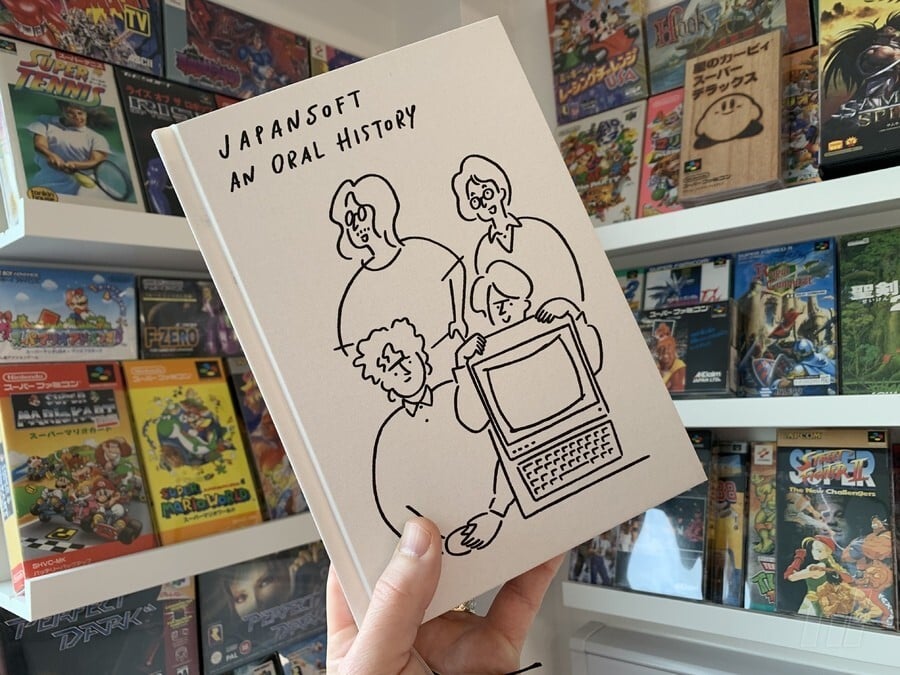
A few years ago, British journalist and author John Szczepaniak launched a Kickstarter campaign with a grand vision – to document the memories of some of Japan's most influential yet underappreciated games developers.
The result was an extensive three-volume series (and accompanying DVD) which, in our opinion, is essential reading for anyone even the slightest bit interested in the crazy world of Japanese game development. However, by Szczepaniak's own admission, sales of each book were less than expected and despite hitting his initial Kickstarter goal, he had to use some of his own money to finish the trilogy.
Thankfully, The Untold Story of Japanese Games Developers project lives on via another book entitled Japansoft: An Oral History. Published by UK firm Read-Only Memory – which produced a similar book relating to the UK development industry a while back – this scaled-down edition pulls together selected interviews from Szczepaniak's series and presents them in a gloriously text-dense format, complete with unseen photos from the period as well as box artwork and illustrations by Yu Nagaba.
Like Britsoft: An Oral History, Japansoft is mainly text-based and lacks the screenshots and often crude doodles that peppered the pages of Szczepaniak's trilogy. While this might be hard to swallow if you're a fan of image-heavy coffee-table tomes, it offers us a wonderfully detailed and content-rich book which is bursting with quotes, anecdotes and much more besides (as well as using Szczepaniak's material, Read-Only Memory editor Alex Wiltshire has included entirely new interviews with the likes of Dylan Cuthbert, Manami Matsumae and Keiji Yamagishi).
While you could never for a second question the passion of Szczepaniak's original three-book series, it was abundantly clear that he was doing much of the design work on his own; it was a passion project and it showed. While Japansoft lacks that ‘fanzine’ look that made Szczepaniak's series so unique and raw, it's arguably a better way to present this information; interviews have been cherry-picked and edited down, with the book more cleanly divided into companies rather than individual people. It's also presented in hardback on gorgeous, high-quality paper stock, making it something you're going to treasure for years. We do miss the anarchic nature of Szczepaniak's originals, though, so it's tempting to suggest you seek out both, if at all possible.
While we’re a little torn between the dense and captivating Szczepaniak originals and this compact and gorgeously-presented update, one thing is for sure: we’re glad this project exists and Szczepaniak should be applauded for his efforts to chronicle the fortunes of some of the most underrated developers in gaming history – just as Read-Only Memory should be thanked for giving the venture a second shot at critical and commercial success.
Thanks to Read-Only Memory for supplying a copy of Japansoft for this review.
This article was originally published by nintendolife.com on Tue 28th January, 2020.






Comments 9
I really hope that the seedier, dodgier elements of Szczepaniak's original books have been excised by ROM. (The books had interesting content in places, but desperately needed professional editing and removal of troublesome content.)
Thanks for publicizing this - I just bought a copy through your link! I have an ebook version of the first Untold History of Japanese Developers Volume but a physical edition of the condensed version is a must-have item. This will be a key piece of history in the coming decades as so much other information about the medium's early history is lost.
Looks very interesting- does it also cover better known houses as well?
No thanks. Dude's still a massive d-bag, he has ALWAYS been a massive d-bag.
Wow I didn't know about Szczepaniak's series and they are on kindle unlimited! Thanks for the material.
How long does shipping take from readonlymemory.vg if I import it to the US?
@Protocol_Penguin ‘Troublesome content’ you say?
Tell me more...
Remember if it wasn't the craze of Japan coming of age to the Electronics revolution after WWII - we wouldn't have NES or the likes in American and the World. So those playing Nintendo, PS consoles should really thanks Japan for their endeavor in this beginning. Something alot of Gamers of both consoles are taking for granted without realizing where it all started from.
This sounds awesome. I’m going to get it on the strength of the publisher’s name alone, “Read Only Memory”. Genius.
An interesting read about John Szczepaniak:
http://versusjs.blogspot.com/2014/04/joint-statement-regarding-criminal-case.html
Show Comments
Leave A Comment
Hold on there, you need to login to post a comment...